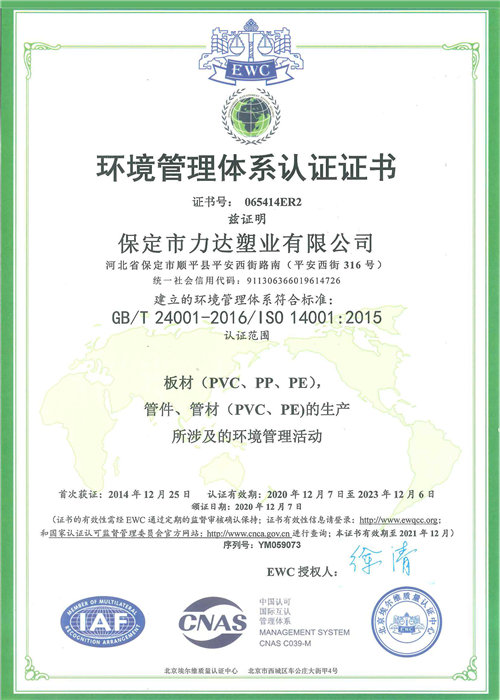Aug . 12, 2024 10:36 Back to list
Creating an Effective Drip Irrigation System with PVC Pipes for Sustainable Gardening Solutions
Drip Irrigation Using PVC Pipe A Sustainable Solution for Agriculture
In recent years, drip irrigation has garnered significant attention as a method for conserving water while maximizing agricultural yield. Traditional irrigation methods often lead to water wastage, soil erosion, and nutrient depletion. Conversely, drip irrigation delivers water directly to the plant's roots, minimizing evaporation and runoff. Utilizing PVC (polyvinyl chloride) pipes for this system not only enhances its efficiency but also brings about cost-effective solutions for farmers.
What is Drip Irrigation?
Drip irrigation is a micro-irrigation system that applies water in the form of droplets directly to the soil at the base of plants. This method allows for precise control over how much water each plant receives, catering to their individual needs. By using a network of tubing, emitters, and valves, drip irrigation ensures that water is delivered efficiently, directly reducing waste.
Advantages of Using PVC Pipes in Drip Irrigation
1. Cost-Effective PVC pipes are relatively inexpensive compared to other materials used in irrigation. Their low cost makes them accessible for small-scale farmers who may not have adequate funds for sophisticated irrigation systems.
2. Durability PVC is resistant to corrosion, chemicals, and UV rays, leading to a longer lifespan for the irrigation system. Unlike metal pipes, PVC pipes do not rust or degrade quickly, which makes them ideal for agricultural environments.
3. Easy to Install and Maintain The lightweight nature of PVC makes installation straightforward. Additionally, the maintenance of a PVC drip irrigation system is less demanding, as these pipes can easily be cleaned and repaired if needed.
4. Versatility PVC pipes can be used to design various drip irrigation systems, adapting to different types of crops and soil conditions. Farmers can customize the layout according to the specific needs of their fields.
drip irrigation using pvc pipe

Designing a PVC Drip Irrigation System
Creating an efficient drip irrigation system with PVC pipes involves several steps
1. Planning the Layout The first step is to assess the field and determine the best layout based on the crop types, planting patterns, and soil characteristics.
2. Selecting Components Farmers need to choose the right diameter of PVC pipes and appropriate emitters based on the plants' water requirements. The connections, filters, and pressure regulators should also be considered to ensure consistency in water delivery.
3. Installation After laying out the system, the PVC pipes should be connected in a way that facilitates optimal water distribution. Begin by laying the main supply line from the water source and attach lateral lines that will run alongside the plants.
4. Testing and Adjustment Once installed, the system should be tested to ensure that all emitters are functioning correctly and delivering the right amount of water. Adjustments can be made to the flow rate through emitters based on plant needs.
Conclusion
Drip irrigation using PVC pipes presents a sustainable farming solution that can significantly improve water efficiency and crop yields. As the global population continues to grow and water resources become scarcer, implementing such innovative irrigation methods is crucial. With its array of benefits, from cost-effectiveness to durability, PVC-based drip irrigation represents a valuable asset for modern agriculture, ensuring crops receive the water they need while minimizing waste and fostering a healthier ecosystem. By adopting this efficient system, farmers can not only increase their productivity but also contribute to a more sustainable future for agriculture.
-
Durable PP Rigid Sheet: Lightweight, Chemical Resistant Solutions
NewsAug.21,2025
-
PVC Grey Sheet for Extraction: Chemical Resistant & Durable
NewsAug.19,2025
-
Durable PVC Pipe Fittings for Plumbing & Irrigation Needs
NewsAug.18,2025
-
HDPE Steel Belt Reinforced Spiral Corrugated Pipe | High Strength
NewsAug.17,2025
-
HDPE Pipe Fittings: Durable, Leak-Proof Solutions
NewsAug.16,2025
-
Premium CPVC Sheet: High-Temp & Chemical Resistant Solutions
NewsAug.15,2025

